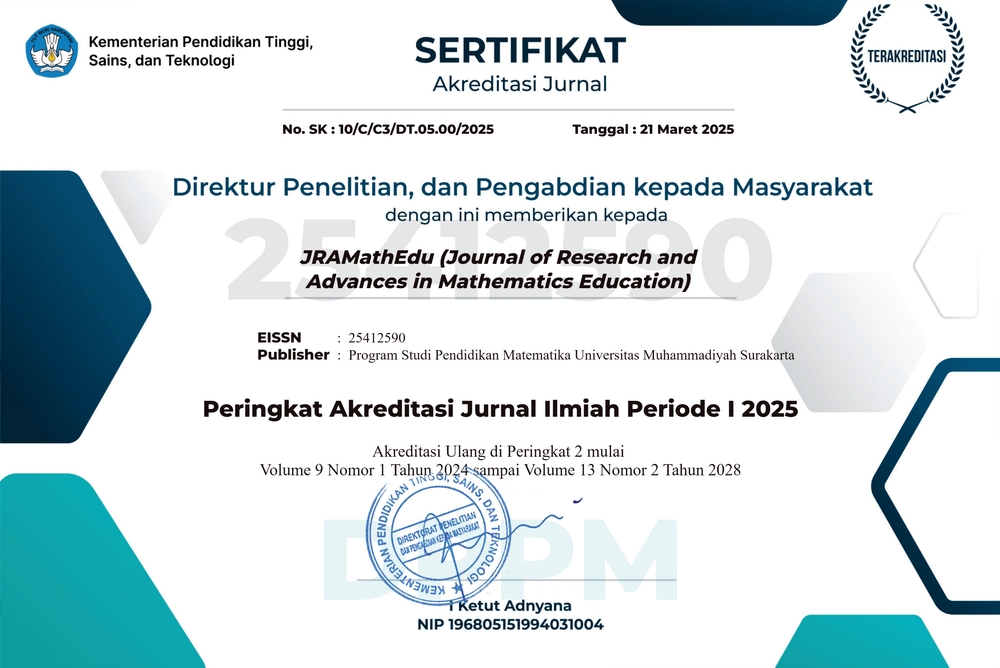Students’ understanding of a geometric theorem: A case of grade 9 problem posing
DOI:
https://doi.org/10.23917/jramathedu.v7i2.16394Keywords:
Problem posing, Student’s understanding, Teaching problem posing, Geometric interpretation, Natural language mathematicsAbstract
Teaching axiomatic representation of mathematical objects in all grades can and should be done. The paper analyzes students' understanding and how they perceive theorems using problem posing. We looked at how English-language learners create questions about four geometric theorems from a 9th-grade math textbook. The analysis looks at the question's distinctiveness, its elements' relationships, and sentence structure flaws. These lines, angle, and triangle theorems were chosen to exemplify problem scenarios when a theorem is conveyed in words but not explicitly symbolized. The difficulty of posing mathematically relevant problems stems from the required process of simultaneously changing the theorem language, home language, and formal mathematics language. In Van Hiele's methodology, the pupils' issues aren't classified as a formal or informal deduction. Questions either deduce from a formal system or emphasize theorems. Mastering the required representation registers can assist students in posing problems that reflect, at the very least, at the formal deduction level. The absence of symbolic representation increases the difficulty in posing original problems involving geometric theorems. As a result, how problems are made, especially how they are written, shows how well students understand math through problem-posing.
Downloads
Submitted
Published
How to Cite
Issue
Section
License

This work is licensed under a Creative Commons Attribution-NonCommercial 4.0 International License.


















